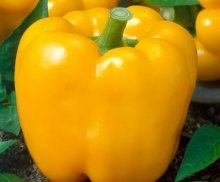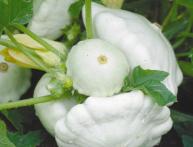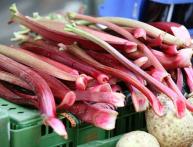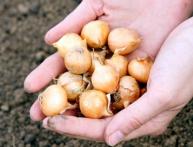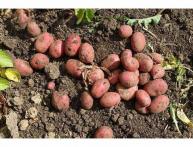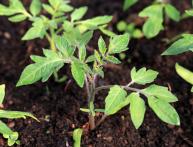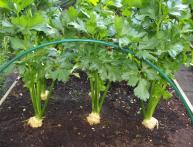Pepper Fat Baron: description and cultivation techniques
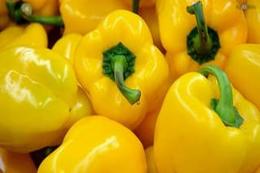
Pepper is one of the most common vegetable crops. Thick ones are considered the most popular among vegetable growers. varieties with large fruits. One of these is the “Fat Baron” pepper, selected by the Transnistrian Research Institute of Agriculture.
Content:
- General description of the variety
- Growing seedlings
- Planting and care in open ground
- Pests and diseases of pepper
General description of the variety
“Fat Baron” is a mid-early variety of sweet pepper with red fruits. On average, 120-130 days pass from germination to fruit ripening. Plants of this variety are tall, powerful and well-leafed. The fruits are cone-shaped. When biological ripeness occurs, they become bright red, and in the technical phase they are light green in color.
The average weight of the fruit is about 150 g, and the wall thickness exceeds 6 mm. The taste is high. This variety of pepper can be successfully grown in open ground conditions, as well as in film greenhouses, where it sets fruit well. The average yield is about 5 kg per 1 sq. m. Among the disadvantages of this variety, one can note its low resistance to such disease like verticillium. This variety is intended for both fresh consumption and canning.
Growing seedlings
They begin sowing pepper seedlings in mid-February. To do this, prepare seed containers with loose and nutritious soil.The seeding depth should not exceed 1.5-2 cm. Sweet peppers do not tolerate picking quite well, so if possible, it is best to sow immediately in separate cups. Seeds can be sown either dry or after soaking them in water with growth stimulants.
It is advisable to maintain the temperature during germination in the region of 27-30°C. After the shoots appear, it is reduced to 22-25°C. When sowing in February, it is advisable to illuminate the seedlings. For this, you can use fluorescent lamps or special phyto. Before disembarking seedlings must be pre-hardened. To do this, containers with plants are taken out onto the terrace or balcony.
Planting and care in open ground
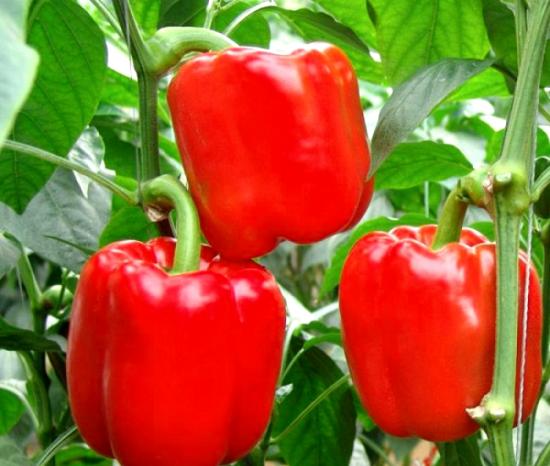
In most regions, it is recommended to start planting seedlings in open ground at the end of May. For planting peppers, choose sunny areas with loose and fertile soils. The best predecessors for this crop are cucumbers or cabbage. Peppers should not be planted after other crops from the nightshade family.
In the first week after planting, the pepper beds must be shaded. This will help the plants settle down better in their new location. Further care for this crop consists of watering, loosening, weeding and feeding.
Watering
Pepper is a very moisture-loving crop, so its plantings need to be watered frequently and abundantly. It especially needs moisture during fruit development. After watering, the soil around the bushes must be loosened. This must be done very carefully; pepper has a shallow root system and is very easy to damage.
Peppers should be fed according to the following scheme:
- The first feeding is carried out 2 weeks after planting the seedlings. For this, urea or ammonium nitrate is used.They must be diluted according to the attached instructions.
- The second feeding is carried out in the budding phase. Mullein infusion is used for this.
- The third is during flowering. During this period, you can use both mullein and complex mineral fertilizer
Video on how to care for "Fat Baron" peppers
When growing sweet peppers, do not forget about the formation of bushes. To do this, it is recommended to remove all stepsons and the lower tier of leaves. Advice! Experienced vegetable growers also recommend pinching the pepper on the third pair of leaves. In the future, this technique allows you to obtain well-developed plants with a large number of ovaries. Fruit harvesting must begin in the technical ripeness phase. This will give the rest of the fruits the opportunity to develop.
Pests and diseases of pepper
Pepper, like most garden crops, is very often attacked by pests. The most common pests of this crop are the following:
- Aphid
- Spider mite
- Whitefly
- Gray rot
Aphid. It can cause serious damage to pepper plantings, especially young and fragile plants. Its colonies feed on sap. To combat it, you can use tobacco dust, which is carefully sprayed from a gauze bag onto the plants. Insecticides can also be used to kill this pest. For example, “Iskra”, “Commander”, “Tanrek” and similar drugs.
Spider mite. Quite a dangerous and persistent pest. It parasitizes the lower part of leaves, like aphids, and feeds on plant sap. You will have to process the pepper from it more than once. To do this, you can use the following drugs “Fitoverm”, “Aktellik”, “Aktara”.
Whitefly. Another fairly persistent and dangerous pest.When heavily infested, whiteflies can completely destroy pepper plantings. To combat it, systemic insecticides are used.
Gray rot. Fungal disease. It is most widespread in cool and rainy years. For control, preventive spraying with insecticides is used. Already infected plants are removed and destroyed.
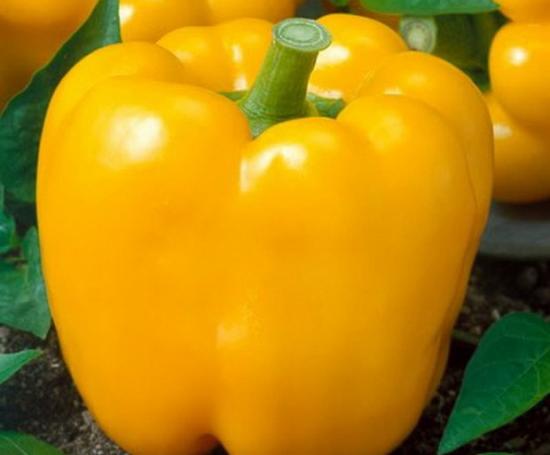
Late blight. It is the most common disease of all nightshade crops, including sweet peppers. It appears as dark spots on the fruits and leaves of plants. Preventive measures are used to combat processing copper-containing fungicides. Infected plants must be removed promptly.
Bronzing or spotted wilt. Characterized by dirty bronze spots on the leaves. After which the plant begins to gradually dry out. Fungicides are used for control. To get a rich harvest of pepper, you need not only to properly care for it, but also be sure to carry out preventive treatments against major diseases.


